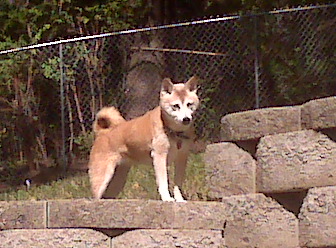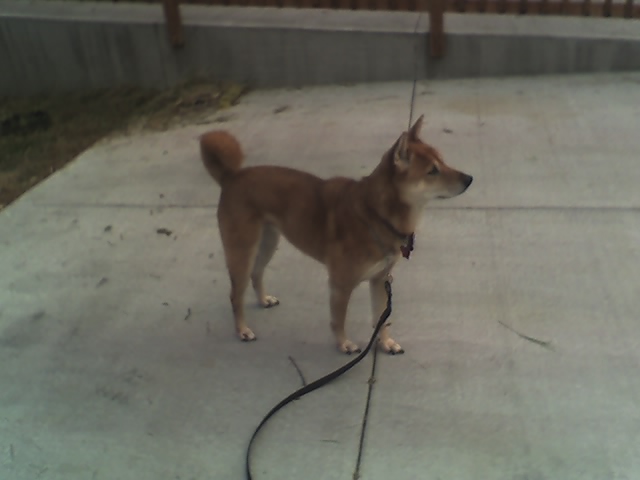Dog Origins Revisited
-
Some interesting data out of Davis:
MODERN DOGS ARE MORE ASIAN FUSIONS THAN EURO PUPS, STUDY FINDS
Don't close the book on Fido's genealogy just yet: A new study led by University of California, Davis, wildlife genetics researchers provides a surprising glimpse into the global heritage of both wild and domestic dogs.
Results from the study, which examined the DNA of 642 dogs, suggest that European and American canine breeds were much more influenced by dogs from Southeast Asia than by ancient Western dogs or by dogs from the Middle East, as was previously thought.
Findings from the study by collaborators in California, Iran, Taiwan and Israel appear online in the journal Public Library of Science
(PLoS) One."The two most hotly debated theories propose that dogs originated in Southeast Asia or the Middle East," said study co-author Ben Sacks, director of the Canid Diversity and Conservation Group in the Veterinary Genetics Laboratory in the UC Davis School of Veterinary Medicine. The laboratory is an international leader in animal genetics research and provides DNA testing and forensic analysis for numerous wildlife, companion animal and livestock species.
"In contrast to those theories, our findings suggest that modern European and American dogs are overwhelmingly derived from dogs that were imported from Asia since the silk trade, rather than having descended directly from ancient dogs native to Europe," Sacks said.
"Therefore, previous arguments against Europe as a potential site of dog origins, based on modern European dog DNA, must be reconsidered, and our high-resolution Y-chromosome data from indigenous dogs of the Middle East and Southeast Asia now provide the means to test this hypothesis using ancient European dog DNA."Sacks said that it was particularly surprising to find that Middle Eastern dogs had almost no influence on Western breeds, even though Europe is geographically closer to the Middle East than to Southeast Asia.
Other findings from the study demonstrate that Middle Eastern and Southeast Asian village dogs must have originated from a common gene pool thousands of years ago or from distinct groups of wolves or wolf-like dogs. The findings also indicate that Southeast Asia likely played an important role in the evolution of Western breed dogs.
In order to compare the evolutionary relationships between the dogs of Europe, the Middle East and Southeast Asia, the researchers analyzed DNA samples from nine wild members of the dog family and 633 domestic dogs. The domestic dogs were mostly from villages in the Middle East and Southeast Asia; they also included Australian dingoes, desert-bred salukis, which are Middle Eastern sight hounds, and 93 purebred dogs representing 35 other breeds.
The village dogs of Southeast Asia and the Middle East were chosen for the study because they are considered to have developed independent of modern breeds and are likely to reflect the genetics of ancient dogs of their regions. The Australian dingoes and Bali dogs were included because they have been isolated from other canine populations for thousands of years.
"Our findings demonstrate the importance of village dogs as windows into the past, providing a reference against which we can examine ancient DNA samples to shed light on the origins and spread of the domestic dog," Sacks said.
Funding for the study was provided by the UC Santa Cruz Pacific Rim Research Program of the Center for Global, International and Regional Studies, and the UC Davis Veterinary Genetics Laboratory.
-
Hear, Hear,
Jeff thank you for the very informative post about the asian origins. As a long time admirer of the asian spitz breeds, eg. The Korean Jindo, Malasian Singing Dog, the Australian Dingo, and the Japaneese Shiba Inu, there has ben no doubt in my mind that they all descended from the same roots. Having been owned by a Jindo and a pair of Shiba's ,the resemblance in appearance, personality and attitude are remarkable. The Photo above is of our 13yo Korean Jindo, the one below is of our 11 yo Shiba Inu. The main reason for our phasing over to the Basenji is their behavior, and attitude are so very similar to the Shiba and Jindo.


-
The original article is here, for those interested:
http://www.plosone.org/article/info%3Adoi%2F10.1371%2Fjournal.pone.0028496I'm no scientist, so much of it was lost on me. I do admit being inherently skeptical of attempts to represent THE origin of dogs… I can't figure out how these studies account for how human relationships with dogs have developed over tens of thousands of years, and I'm far more interested in the way that culture and history have shaped the way we think of dogs -- or even what even counts as "domestication!" A lot of the Asian spitzes historically straddled and crossed that line, for example, roaming free as packs of wild dogs. Anyway, I also find it interesting that they chose a number of island-based village dogs to sample (i.e., the Taiwanese tugou, which is also close to my heart).
@Mr B, I chuckle at your comment about "phasing over to the Basenji." I frequently think of doing just that so I don't have to deal with all these giant furballs all around my home!! But I think I will always be partial to the Asian spitz breeds. I love the look of your Jindo, and your Shiba is adorable too.